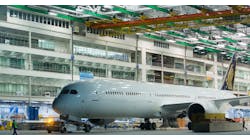Rolls-Royce has developed a new, turbogenerator technology it is proposing as a scalable on-board power source for hybrid-electric aircraft, specifically electric Vertical Take-off and Landing (eVTOL) and or fixed-wing aircraft like private or commuter aircraft. The new system would complement other elements of the Rolls-Royce Electrical propulsion portfolio, which is focused on extending the range aircraft using sustainable aviation fuels, and later hydrogen combustion.
Like other manufacturers in the aerospace sector, Rolls-Royce has committed its new products to be compatible with net-zero operation by 2030, and that all its products will be compatible with net-zero operation by 2050.
As described by developer, the turbogenerator technology will be scaled to serve a power range of 500 to 1200 kW, which would open new, longer routes can be served by electric battery-powered aircraft.
“Rolls-Royce will be the leading provider of all-electric and hybrid-electric power and propulsion systems for Advanced Air Mobility and will scale this technology over time to larger platforms,” according to Rob Watson, president – Rolls Royce Electrical.
“As part of our strategy, we are looking at offering the complete sustainable solution for our customers. This means extending routes that electric flight can support through our turbogenerator technology. This will advance hybrid-electric flight and mean more passengers will be able to travel further on low to net zero emissions aircraft,” he added.
Rolls-Royce developers continue to work on the turbogenerator design and its system integration, and are focused on ensuring smart power distribution during flight. This concept involves using the turbogenerator to recharge batteries after take-off or to directly power propellers directly, so an aircraft could switch between power sources during flight.
The turbogenerator technology development is being partly funded by the German Ministry for Economic Affairs and Climate Action.






